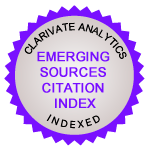Derecho, nudge y salud: ¿modificando la conducta a través del estigma?
DOI:
https://doi.org/10.14198/doxa.29348Palabras clave:
Estigma, Salud, Nudge, Ciencias del ComportamientoResumen
Alrededor del mundo, es cada vez más común el uso del nudge como estrategia regulatoria para promover la salud y prevenir la enfermedad. Sin embargo, en la medida que ciertas clases de nudge se apoyan en la transmisión de normas sociales o en la asociación de emociones negativas a determinados comportamientos, puede tener efectos estigmatizantes respecto de determinados grupos. En este trabajo se examina este fenómeno y se analizan posibles enfoques para determinar si es aceptable o no estigmatizar en nombre de la salud. Una de las principales conclusiones que resulta de este análisis es que, dada la evidencia actualmente disponible acerca de la eficacia de los nudges y de sus potenciales efectos estigmatizantes, parecen haber buenas razones éticas y jurídicas para evitarlos o aplicarlos con suma cautela.
Citas
AFIF, Z., ISLAN, W.W., CALVO-GONZALEZ, O. y DALTON, A. (2019). Behavioral science around the world: profiles of 10 countries, https://documents1.worldbank.org/curated/en/710771543609067500/pdf/132610-REVISED-00-COUNTRY-PROFILES-dig.pdf.
AILSHIRE J.A. y HOUSE, J.S. (2011). «The Unequal Burden of Weight Gain: An Inter-sectional Approach to Understanding Social Disparities in BMI Trajectories from 1986 to 2001/2002», Social Forces, 90(2), 397-423.
ASCH, S.E. (1951). «Effects of Group Pressure upon the Modification and Distortion of Judgments», en GUETZKOW, H. (ed.), Groups, Leadership and Men; Research in Human Relations. Oxford, Carnegie Press, 177-190.
ASSARI, S. y BOYCE, S. (2021). «Social Determinants of Cigarette Smoking among American Women during Pregnancy», Women, 1(3), 128-136.
BAYER, R. (2008). «Stigma and the ethics of public health: Not can we but should we», Social Science & Medicine, 67, 463-472.
BLAKE, V.K. y HATZENBUEHLER, M.L. (2019). «Legal Remedies to Address Stigma-Based Health Inequalities», The Milbank Quarterly, 97(2), 480-504.
BUCHEN, C., DEFFAINS, B. y PALERMO, A. (2019). «Stigmatization, Liability and Pub-lic Enforcement of Law», Revue d’économie politique, 129(2), 235-259.
BURRIS, S. (2006). «Stigma and the law», Lancet, 367, 529-531.
BURRIS, S. (2008). «Stigma, ethics and policy: A commentary on Bayer’s ‘Stigma and the ethics of public health: not can we but should we’», Social Science & Medi-cine, 67, 473-475.
CALLAHAN, D. (2013). «Obesity: Chasing an elusive epidemic», Hastings Center Re-port, vol. 43, 34-40.
CEPAL (2017). El costo de la doble carga de la malnutrición: Impacto social y eco-nómico. Estudio piloto en Chile, Ecuador y México, https://www.cepal.org/sites/default/files/presentation/files/version_final_alicia_barcena.pdf.
COWEN, N., VIRK, B., MASCARENHAS-KEYES, S. y CARTWRIGHT, N. (2017). «Random-ized Controlled Trials: How Can We Know ‘What Works’?», Critical Review 29(3), 265-292.
CUADRADO, C. (2016). Medición de la carga económica actual de la obesidad en Chile y proyección al año 2030, https://es.scribd.com/document/475359304/Medicion-de-la-carga-economica-actual-de-la-obesidad.
DELLAVIGNA, S. y LINOS E. (2022). «RCTs to Scale: Comprehensive Evidence From Two Nudge Units», Econometrica, 90(1), 81-116.
EINFELD, C. (2018). «Nudge and evidence based policy: fertile ground», Evidence & Policy, 15(4), 509-524.
ESPARZA REYES, E. (2017). La igualdad como no subordinación. Una propuesta de interpretación constitucional. Ciudad de México, Tirant lo Blanch.
EVANS, J. (2019). «Reflections on reflection: The nature and function of type 2 pro-cesses in dual-process theories of reasoning», Thinking & Reasoning, 25, 383-415.
EVANS‐POLCE, R.J. CASTALDELLI-MAIA, J.M., SCHOMERUS, G. y EVANS-LACKO, S.E. (2015). «The downside of tobacco control? Smoking and self‐stigma: a system-atic review», Social Science & Medicine, 145, 26-34.
EWERT, B. (2019). «Underlying Assumptions in Health Promotion Policymaking», en EWERT, B. y LOER, K. (eds.) Behavioural Policies for Health Promotion and Disease Prevention. Cham, Palgrave Macmillan, 11-28.
EYAL, N. (2014). «Nudging by shaming, shaming by nudging», International Journal of Health Policy and Management, 3(2), 53-56.
EYAL, N. (2015). «Nudge, Embarrassment, and Restriction—Replies to Voigt, Tieffen-bach, and Saghai», International Journal of Health Policy and Management, 4(1), 53-54.
FREDERICK, S., LOEWENSTEIN, G. y O’DONOGHUE, T. (2002). «Time Discounting and Time Preference: A Critical Review», Journal of Economic Literature, 40(351), 351-401.
FORSYTH, D.R. (2012). «Social Influence and Group Behavior», en WINER, I.B., TEN-NEN, H.A. y SULS, J.M. (eds), Handbook of Psychology: Personality and social psychology. New York, John Wiley & Sons, Inc., 305– 328.
GANDY, O. y NEMORIN, S. (2018). «Toward a political economy of nudge: smart city variations», Information, Communication & Society, 22(14), 2112-2126.
HARTLEV, M. (2014). «Stigmatisation as a Public Health Tool against Obesity — A Health and Human Rights Perspective», European Journal of Health Law, 21, 365-386.
HOJLUND, A.S.G. (2021). «What Should Egalitarian Policies Express? The Case of Paternalism», The Journal of Political Philosophy, 29(4), 519-538.
HOJLUND, A.S.G. (2023). «Avoiding Stigmatization in Paternalistic Health Policy», Social Theory and Practice, 49(3), 491-512.
KELLY, M. P. (2016). «The Politics of Behaviour Change», en SPOTSWOOD, F. (ed.) Beyond Behaviour Change. Key Issues, Interdisciplinary Approaches and Fu-ture Directions. Bristol, Policy Press, 11-26.
LINK, B.G. y PHELAN, J.C. (2001). «Conceptualizing Stigma», Annual Review of Soci-ology, 27, 363-385.
LOZANO, P., THRASHER, JF., FORTHOFER, M., HARDIN, J., REYNALES SHIGEMATSU, L.M., ARILLO SANTILLÁN, E. y FLEISCHER, N.L. (2018). «Smoking-Related Stigma: A Public Health Tool or a Damaging Force?», Nicotine & Tobacco Re-search, 22(1), 96-103.
LUCAS, J.W. y PHELAN, J.C. (2012). «Stigma and status: The interrelation of two theo-retical perspectives», Social Psychology Quarterly, 75(4), 310-333.
MAJOR, B., TOMIYAMA, A.J. y HUNGER, J.M. (2018). «The Negative and Bidirectional Effects of Weight Stigma on Health», en MAJOR, B., DOVIDIO, J.F. y LINK, B.G. (eds.), The Oxford Handbook of Stigma, Discrimination and Health. Oxford, Oxford University Press, 499-519.
MANNING, L., DALTON, A.G. AFIF, Z., VAKOS, R. y NARU, F. (2020). Behavioral
Science Around the World Volume II: Profiles of 17 International Organiza-tions. Washington, D.C., World Bank Group.
MENTIS, A.A. (2017). «Social determinants of tobacco use: towards an equity lens ap-proach», Tobacco Prevention & Cessation, 3(7), 1-8.
MILGRAM, S. (1963). «Behavioral Study of Obedience», The Journal of Abnormal and Social Psychology, 67(4), 371-378.
OECD (2020). Behavioural Insights and Organisations: Fostering Safety Culture, https://www.oecd-ilibrary.org/sites/e6ef217d-en/index.html?itemId=/content/publication/e6ef217d-en.
OWENS, J. y CRIBB, A. (2013). «Beyond Choice and Individualism: Understanding Au-tonomy for Public Health Ethics», Public Health Ethics. Bristol, Policy Press, 6(3), 11-26.
PAHO (2022). Report on Tobacco Control for the Region of the Americas 2022, https://iris.paho.org/handle/10665.2/56259.
PENNER, L.A., HAGIWARA, N., EGGLY, S., GAERTNER, S.L., ALBRECHT, T.L. y DOVIDIO, J.F. (2013). «Racial Healthcare Disparities: A Social Psychological Analysis», European Review of Social Psychology, 24(1), 70-122.
PERSAD, G. (2014). «Libertarian Patriarchalism: Nudges, Procedural Roadblocks, and Reproductive Choice», Women's Rights Law Reporter, 35, 273-298.
PNUD (2020). Usar las observaciones del comportamiento para responder a COVID-19, https://www.undp.org/es/stories/usar-las-observaciones-del-comportamiento-para-responder-covid-19.
PONCE DE LEÓN SOLÍS, V. (2019). «El nudge, su aplicación en el derecho chileno y sus potenciales problemas de constitucionalidad», Revista Chilena de Derecho, 46(2), 345-471.
PONCE DE LEÓN SOLÍS, V. (2021). «El nudge desde la perspectiva de la igualdad como no subordinación», Revista Chilena de Derecho, 48(1), 29-54.
POTTER, L.N., LAM, C.Y., CINCIRIPINI, P.M. y WETTER, D.W. (2021). «Intersectionali-ty and Smoking Cessation: Exploring Various Approaches for Understanding Health Inequities», Nicotine & Tobacco Research, 23(1), 115-123.
PYKETT, J. (2019). «Healthy Nations: Behavioural Approaches in Public Health Poli-cy», en EWERT, B. y LOER, K. (eds.) Behavioural Policies for Health Promotion and Disease Prevention. Cham, Palgrave Macmillan, 11-28.
REYES, M., GARMENDIA, M.L., OLIVARES, S., AQUEVEQUE, C., ZACARÍAS, I. y CORVA-LÁN, C. (2019). «Development of the Chilean front-of-package food warning label», BMC Public Health, 19, 1-11.
RILEY, K.E., ULRICH, M.R., HAMANN, H.A. y OSTROFF, J.S. (2017), «Decreasing smok-ing but increasing stigma? Anti‐tobacco campaigns, public health, and cancer care», AMA Journal of Ethics, 19, 475-485.
SANDERS, M. y HALPERN, D. (2015). «Nudge Unit: Our Quiet Revolution Is Putting Evidence at Heart of Government», The Guardian, 3 de febrero de 2014.
SHAROT, T. (2011). «The Optimism Bias», Current Biology, 21(23), R941– R945.
SLOVIC, P., FINUCANE, M.L., PETERS, E. y MACGREGOR, D.G. (2007). «The affect heu-ristic», European Journal of Operational Research, 177(3), 1333-1352.
SMEDBERG, J., LUPATTELLI, A., MÅRDBY, A.C. y NORDENG, H. (2014). «Characteristics of women who continue smoking during pregnancy: a cross-sectional study of pregnant women and new mothers in 15 European countries», BMC Pregnancy Childbirth, 14, 213.
SMITH TAILLIE, L., BERCHOLZ, M., POPKIN, B., REYES, M., COLCHERO, M.A. y CORVA-LÁN, C. (2021). «Changes in food purchases after the Chilean policies on food labelling, marketing and sales in schools, a before and after study», Lancet, 5(8), e526-e533.
STANTON, M.V. y SMITH, J.A. (2017). «Law, Stigma, and Meaning: Implications for Obesity and HIV Prevention», The Journal of Law, Medicine & Ethics, 45: 492-501. STUBER, J., GALEA, S. y LINK, B.G. (2008). «Smoking and the emergence of a stigmatized social status», Social Science & Medicine, 67, 420-430.
STUBER, J., GALEA, S. y LINK, B.G. (2009). «Stigma and Smoking: The Consequences of Our Good Intentions», Social Service Review, 83(4), 589-609.
SUNSTEIN, C. (2015). «The Ethics of Nudging», Yale Journal on Regulation, 32, 413-450.
SWINBURN, B.A., SACKS, G., HALL, K.D., MCPHERSON, K., FINEGOOD, D.T., MOODIE, M.L. y GORTMAKER, S.L. (2011). «The global obesity pandemic: shaped by global drivers and local environments», Lancet, 378(9793), 804-814.
TEICHMAN, D. (2011). «The Optimism Bias of the Behavioral Analysis of Criminal Control», University of Illinois Law Review, 2011(5), 1697-1712.
THALER, R.H. y SUNSTEIN, C.R. (2017). Un pequeño empujón (Nudge): El impulso que necesitas para tomar mejores decisiones sobre salud, dinero y felicidad. Bogo-tá, Taurus.
TIEFFENBACH, E. (2014). «On the cost of shame: Comment on ‘Nudging by shaming, shaming by nudging’», International Journal of Health Policy and Manage-ment, 3(7), 409-511.
TOMIYAMA A.J. y MANN, T. (2013). «If Shaming Reduced Obesity, There Would Be No Fat People», Hastings Center Report, 43(3), 4-5.
TOMIYAMA, A.J., CARR, D., GRANBERG, E.M., MAJOR, B., ROBINSON, E., SUTIN, A.R. y BREWIS, A. (2018). «How and why weight stigma drives the obesity ‘epidemic’ and harms health», BMC Medicine, 16(1), 1-6.
UN INNOVATION NETWORK (2021). United Nations behavioural science report, https://digitallibrary.un.org/record/3929741.
URMINSKY, O., y ZAUBERMAN, G. (2015). «The Psychology of Intertemporal Prefer-ences», en KEREN, G. y WU, G. (eds.) The Wiley Blackwell Handbook of Judg-ment and Decision Making. New York, John Wiley & Sons, Inc., 141-181.
VOIGT, K. (2014). «Nudging, shaming and stigmatising to improve population health», International Journal of Health Policy and Management, 3(6), 351-353.
WINDSCHITL, P.D. y O’ROURKE STUART, J. (2015). «The Psychology of Intertemporal Preferences», en KEREN, G. y WU, G. (eds.) The Wiley Blackwell Handbook of Judgment and Decision Making. New York, John Wiley & Sons, Inc., 431-455.
WORLD OBESITY FEDERATION (2022). Ranking (% obesity by country), https://data.worldobesity.org/rankings/.
ZAMIR, E. y TEICHMAN, D. (2018). Behavioral Law and Economics. Oxford, Oxford University Press.
NORMAS E INSTRUMENTOS CITADOS:
ASAMBLEA GENERAL DE LAS NACIONES UNIDAS (2012). «Informe de la Relatora Espe-cial sobre el derecho humano al agua potable y el saneamiento, Catarina de Al-buquerque. El estigma y el ejercicio de los derechos humanos al agua y el sa-neamiento», A/HRC/21/42 (2/07/2012).
CHILE, Ley Nº 19.419 (9/10/1995). Regula actividades que indica relacionadas con el tabaco.
CHILE, Boletín N° 4.921-11 (21/3/2007). Proyecto de ley sobre regulación de alimentos poco saludables.
CONSEJO ECONÓMICO Y SOCIAL DE LAS NACIONES UNIDAS (2000). «Observación gene-ral N° 14 (2000). El derecho al disfrute del más alto nivel posible de salud (ar-tículo 12 del Pacto Internacional de Derechos Económicos Sociales y Cultura-les)», E/C.12/2000/4 (11/08/2000).
CONSEJO ECONÓMICO Y SOCIAL DE LAS NACIONES UNIDAS (2009). «Observación Gene-ral N° 20. La no discriminación y los derechos económicos, sociales y cultura-les (artículo 2, párrafo 2 del Pacto Internacional de Derechos Económicos, So-ciales y Culturales)», E/C.12/GC/20 (2/07/2009).
ORGANIZACIÓN MUNDIAL DE LA SALUD (2023). «Ciencias del comportamiento para mejorar la salud», EB152(23).
Descargas
Estadísticas
Publicado
Cómo citar
Número
Sección
Licencia
Derechos de autor 2025 Viviana Ponce de León Solís

Esta obra está bajo una licencia internacional Creative Commons Atribución-NoComercial-CompartirIgual 4.0.





